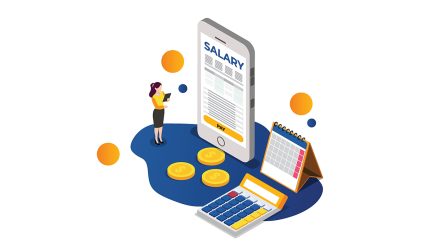Want the latest retirement plan adviser news and insights? Sign up for PLANADVISER newsletters.
Why Costs for Some DB Plans Are Higher Than for Others
Employer costs for defined benefit (DB) plans differ by industry, occupation, establishment size and region, according to data from the Bureau of Labor Statistics.
Costs for defined benefit plans are collected by the Bureau of Labor Statistics through the National Compensation Survey. For defined benefit plans, the survey collects data on premiums, administration fees, and dollar amounts placed by employers into pension funds. These amounts may be from cash, stock, corporate bonds, and other financial instruments. For private industry estimates, the National Compensation Survey does not collect actuarial estimates or actual costs of pension benefits paid to retirees. Benefit costs collected by the survey are converted to hourly rates by dividing the annual costs by the annual hours worked, thus producing the employer costs for employee compensation estimates.
The estimates include all employees regardless of access to benefits; this calculation produces lower costs than when eligibility is considered. Costs for only those employees with access to a benefit (called access costs) can be derived by dividing the benefit costs estimate by the benefit access rate. For example, if the benefit costs were 48 cents per employee hour worked and 12% of employees had access to the benefit then the costs for employees with access would be $0.48 ÷ 12% = $4.00 per employee hour worked.
The costs for providing access to defined benefit plans do not necessarily increase as an employer’s establishment size increases, the Bureau’s data found. Costs were at $4.08 for establishments with 50 to 99 workers in March 2015, compared with $3.14 for establishments with 100 to 499 workers. This is an increase from $1.93 for establishments with 50 to 99 workers and an increase from $1.83 for establishments with 100 to 499 workers in March 2010. Data show relative stability in the change in costs for establishments with 500 or more workers.
In goods-producing industries, access costs have increased from $2.73 per employee hour worked in March 2008 to $4.48 in March 2015, and from $1.79 to $3.00 in service-providing industries. In March 2014, data show that access costs ranged from an average of $1.10 per employee hour worked in the financial activities industry sector to $7.63 per employee hour worked in the other services sector. In comparison, access costs in March 2008 ranged from an average of 67 cents in the leisure and hospitality sector to $5.61 in the construction sector. The construction sector has had access costs in excess of $5.00 per employee hour worked from 2008 to 2015.
NEXT: Why do some some defined benefit plans have larger costs?These costs fluctuations raise questions about why some industries see larger cost changes than other industries.
Employees covered by unions tend to have greater access to employee benefits, including retirement plans. Therefore, unionization may affect an employer’s costs for defined benefit plans. Higher unionization increases the likelihood that employees will have access to benefits such as defined benefit plans. Data show that 72% of union workers had access to defined benefit plans in March 2015, compared with 13% of nonunion workers with access. The access costs for union workers were $4.44 in March 2015, compared with $2.77 for nonunion workers. For all workers combined, employer costs for employees with access to defined benefit plans were $3.39 in March 2015, which is an increase from $2.05 in March 2008. This indicates that other factors, such as the differences in the generosity of the plan and funding, may contribute to increased costs.
The investment performance of the pension fund plays a role in determining the amount and frequency of employer contributions, data about which are collected through the National Compensation Survey, the Bureau notes. When plans are underfunded, employers have to catch up and may make additional contributions. When plans are overfunded, employers might not make regular contributions. If a plan earns a rate of return that is equal to or greater than the rate of return promised to retirees, then the plan may become fully funded without additional contributions made by the employer.
More generous plans have higher associated costs. Frozen defined benefit plans are closed to employees not previously participating, or limits are placed on future benefits for some or all active participants. Some frozen plans may no longer allow participants to accrue benefits. Others may change the prospective benefit formula to limit future accruals. A soft freeze means that a plan is closed to new entrants, but benefit accruals continue for current participants. A hard freeze indicates that a plan is closed to new entrants, and benefits are no longer being accrued for current participants. To reduce costs, employers may freeze plans and provide less generous plan provisions, benefits, and features.
The Bureau of Labor Statistic’s Beyond the Numbers report is here.
You Might Also Like:

Weak Market Returns Sink Corporate Funding Ratios

September Shows Slight Decline in Funding Status for Most DB Plans



